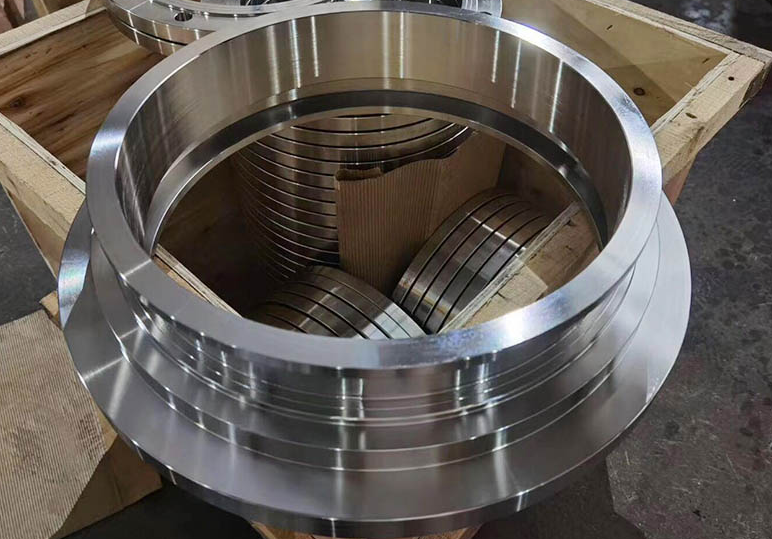Popular flange options include both cast and forged varieties, with the latter offering more value. Casting faults (pores, fractures, inclusions) are present in the forged flange despite its cheap cost, little processing quantity, and precise blank form and size. The casting has a poor internal streamlining (especially if it is a cutting component); Typically, forged flanges are more resistant to rust and contain less carbon than cast flanges. When compared to cast flanges, forged flanges are more streamline, have a denser structure, and have superior mechanical qualities. Large or irregular grains and hardening fractures are further undesirable outcomes of an improper forging process, and the forging price is more than that of a casting flange.

Forged Flange vs Cast Flange: What Are The Key Differences?
The shear and tensile strengths of forgings are superior to those of castings. Casting has the benefit of being inexpensive and capable of producing complicated shapes; Forgings have an upper hand over castings because of their consistent internal structure and lack of potentially detrimental faults like air holes and inclusions. Learn how cast flange differs from forged flange throughout the manufacturing process. An example of a cast flange is the centrifugal flange. Precision casting is used to make centrifugal flanges. This kind of casting has a considerably more refined structure and higher quality than traditional sand casting. Trachoma, a loose structure, and a porous surface are not pleasant conditions to encounter.
We must first learn the means of fabricating the centrifugal flange. The following procedures are crucial to the production of the slide on flange by centrifugal casting and define the product as such:
1.Smelting the chosen raw materials and steels at a temperature of 1600-1700 °C in a medium frequency electric furnace.
2.Keep the metal mold at a steady temperature by preheating it to 800–900 degrees Celsius;
3. With the centrifuge running and the mold heated from Step 2, inject the molten steel from Step 1.
4. Naturally cooling the castings to 800-900 °C for 1-10 minutes;
5. Take the casting out of the mold once it has cooled to room temperature using water.
Let’s take a look at how forged flanges are made: when high-quality steel billets have been forged, they are chopped, heated, formed, and cooled in a series of steps known as the forging process. The three types of forging are known as free forging, die forging, and mold forging. Forging quality and production batch will dictate which forging techniques are used throughout manufacturing. Due to its poor productivity and high machining allowance, free forging is often reserved for forging single pieces or small batches of forgings with basic geometries using simple and adaptable equipment.
The three main types of free forging equipment are the air hammer, steam air hammer, and hydraulic press. Die forging is easily mechanized and automated, has a low learning curve for operators, and produces high output. Die forgings have the potential to further increase the service life of components due to their high dimensional precision, minimal machining allowance, and more acceptable fiber structure distribution of forgings.
The shape of the forging is forged into the blank progressively via various fundamental deformation mechanisms during free forging. Free forging comprises the fundamental operations of upsetting, elongating, punching, bending, and cutting.
1.Forging raw blanks in the axial direction results in a reduction in height and a rise in cross section, a procedure known as “upsetting.” Forging gear blanks and similar disc-shaped forgings is a frequent practice. Both total and partial distress might be experienced.
2. Elongation, a kind of forging, extends the length of the blank while decreasing its cross-section. Used for making shaft work blanks such as lathe spindles, connecting rods, etc.
3. Punching using a punch to create openings in the blank during the forging process.
4. Fourth, forming the blank into the desired shape or angle during the forging process.
5. A method of forging in which a portion of the blank is rotated with respect to the rest of the blank.
6. During the forging process, the blank is either sliced in half or the head is removed.
“Die forging,” also known as “model forging,” is created by inserting a hot blank into a forging die that is part of the die forging machine.
1. The blanking, heating, pre-forging, final-forging, punching and peeling, trimming, tempering, and shot peeling are the fundamental steps in die forging. Upsetting, elongating, bending, punching, and shaping are all common operations.
2. Inventions used in the process of forging Die forging hammer, hot die forging press, flat forging machine, friction press, etc. are all examples of common die forging equipment.
3. Remove the flange by cutting its inner and outer diameters and thicknesses straight from the center plate, and then processing the bolt holes and waterlines. The flange thus formed is known as a cutting flange, and its maximum diameter is limited by the width of the intermediate plate.
4. Flange is a rolled flange, which is made by first cutting a strip from a medium-thickness plate and then rolling the resulting rectangular piece into a circular. Following a successful rolling process, the next steps include welding, flattening, and finally waterline and bolt hole processing.

